Locals, Pols Overwhelmingly Support Landmarking Bed Stuy’s Dangler Mansion at LPC Hearing
The history and cultural significance of the building were front and center at the hearing, especially its role for more than 50 years as the headquarters of the African American women-led Masonic organization.

Photo by Anna Bradley-Smith
In an overwhelming show of support for landmarking the French Gothic Revival mansion at 441 Willoughby Avenue in Bed Stuy, 19 people spoke in favor at a virtual Landmarks Preservation Commission hearing this morning. Others sent 71 letters urging the LPC to save the circa 1897 structure as an individual landmark. A 94-year-old Willoughby Avenue resident even caught an Access-a-Ride trip to the commission’s building in Manhattan for today’s Zoom meeting, believing it was in person.
Her support was duly noted and she was given a seat from which to watch the 9:30 a.m. hearing in the LPC’s 1 Center Street office, LPC Chair Sarah Carroll said.
In addition to Bed Stuy residents, New York City Council Member Chi Ossé, Assembly Member Stefani Zinerman, State Senator Jabari Brisport, representatives from Community Board 3, the Historic Districts Council, New York Landmarks Conservancy, the Victorian Society, Pratt Institute and even a rep for famed actor Edward Norton attended the 1.5-hour-long hearing to share their reasons for why they believe the LPC should vote to protect the corner building that many called an anchor, not just of Willoughby Avenue, but of the wider community.
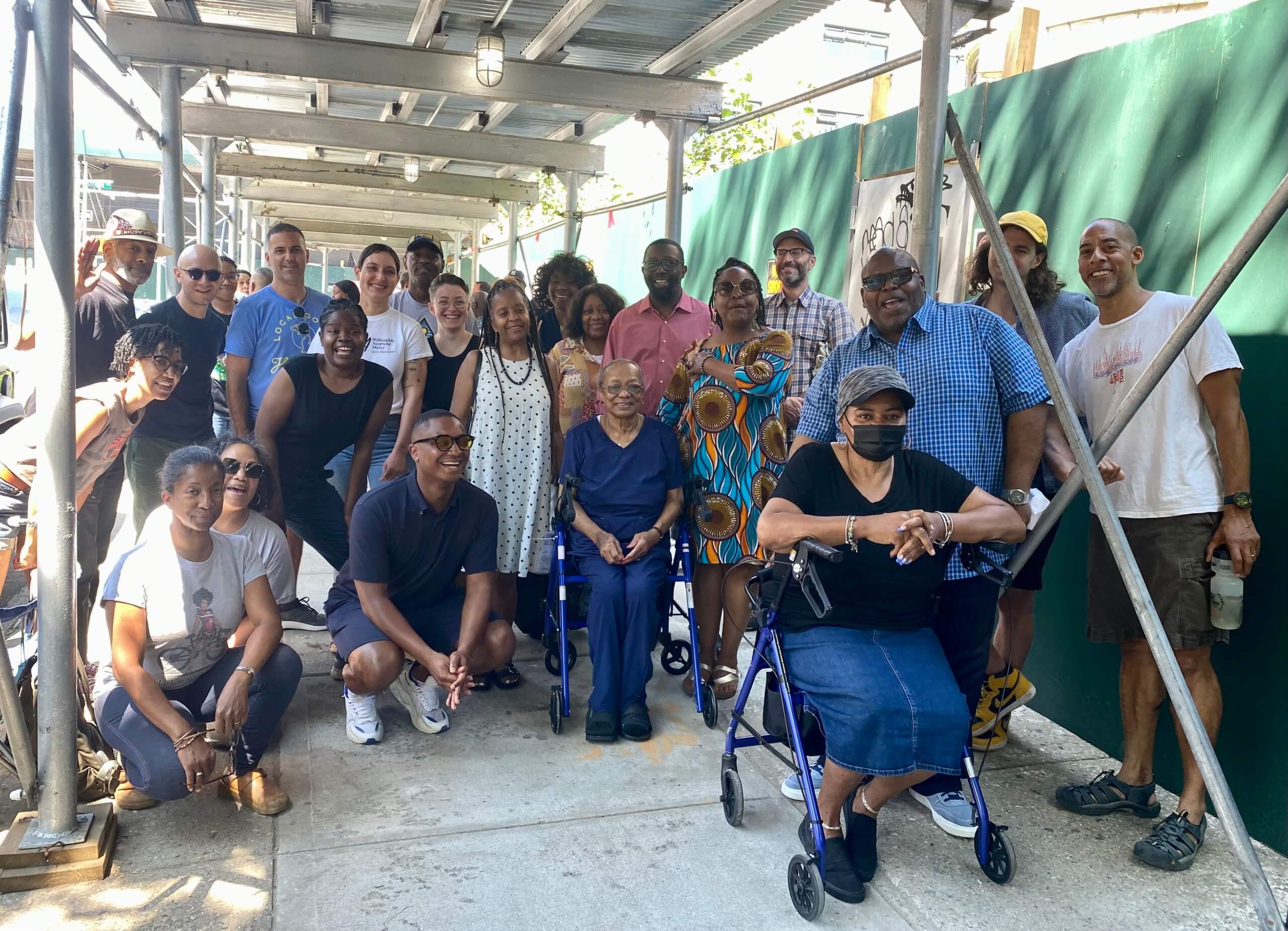
Only four testified against landmarking: The current owners, their legal counsel, and the lawyer for developer Tomer Erlich.
The history and cultural significance of the building were front and center at the hearing, especially its role for more than 50 years as the headquarters of the African American women-led Masonic organization, the United Grand Chapter Order of the Eastern Star.
The hearing was the first chance for many in the community to hear directly from the order, which owns the building. Current Grand Matron Arlene Punnett and Associate Grand Matron Celeste Jefferson both spoke against the landmark designation, saying they would much prefer the building be preserved, but serious financial issues have forced their hand to sell the property to be developed. Currently, the property has a $2.3 million lien and the order is facing foreclosure proceedings if a current contract of sale does not go through, reps for the organization said Sunday.
The meeting followed LPC’s surprise decision last month to explore landmarking the house. It was commissioned in 1897 by German immigrant and prominent local meat purveyor Jacob Dangler and designed by Brooklyn’s most prolific German American architect at the time, Theobald Engelhardt. The Dangler family owned the house until 1967, when it was sold to a Masonic chapter. The deed was transferred to the United Grand Chapter Order of the Eastern Star (OES) for $40,000 in 2003.
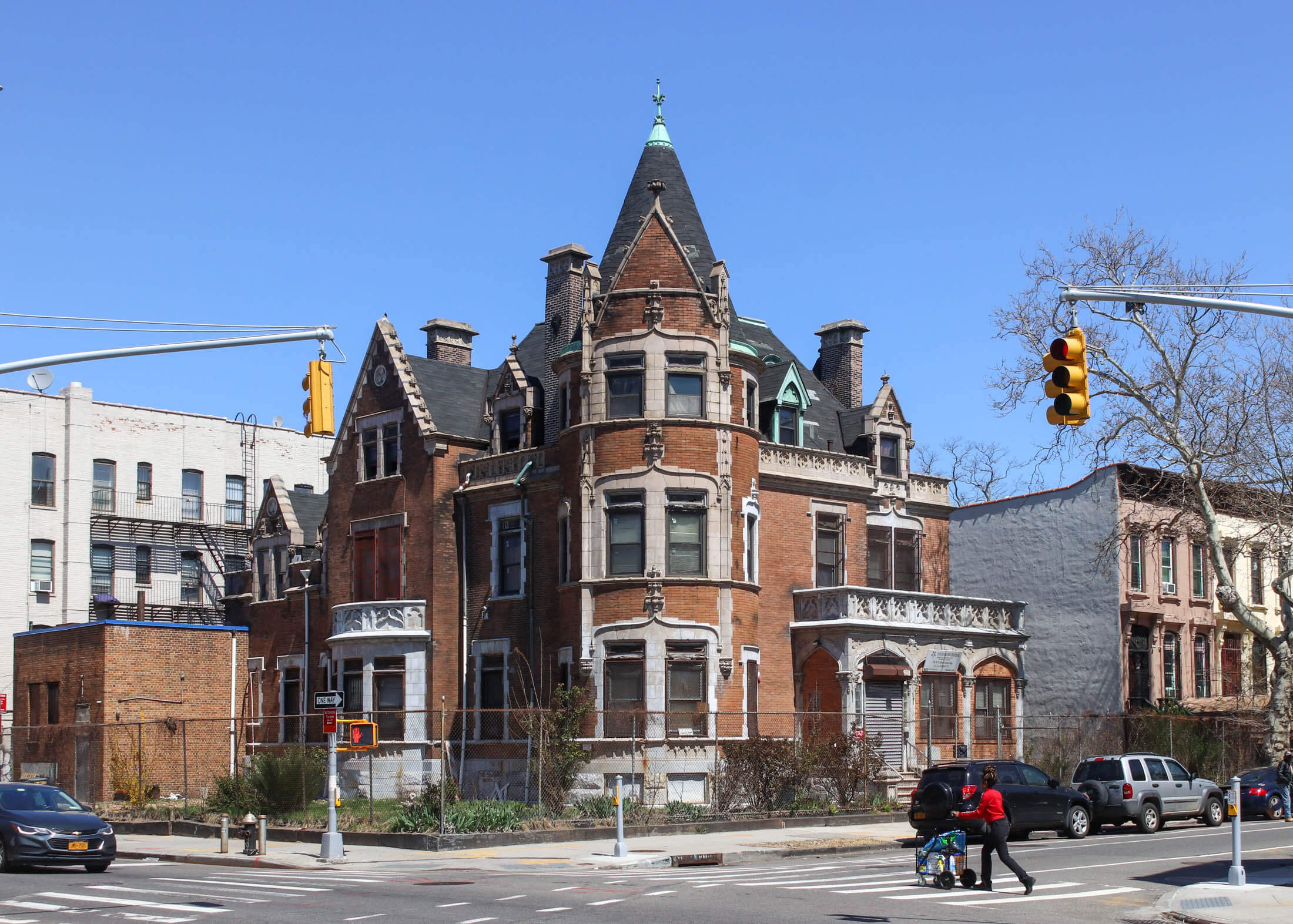
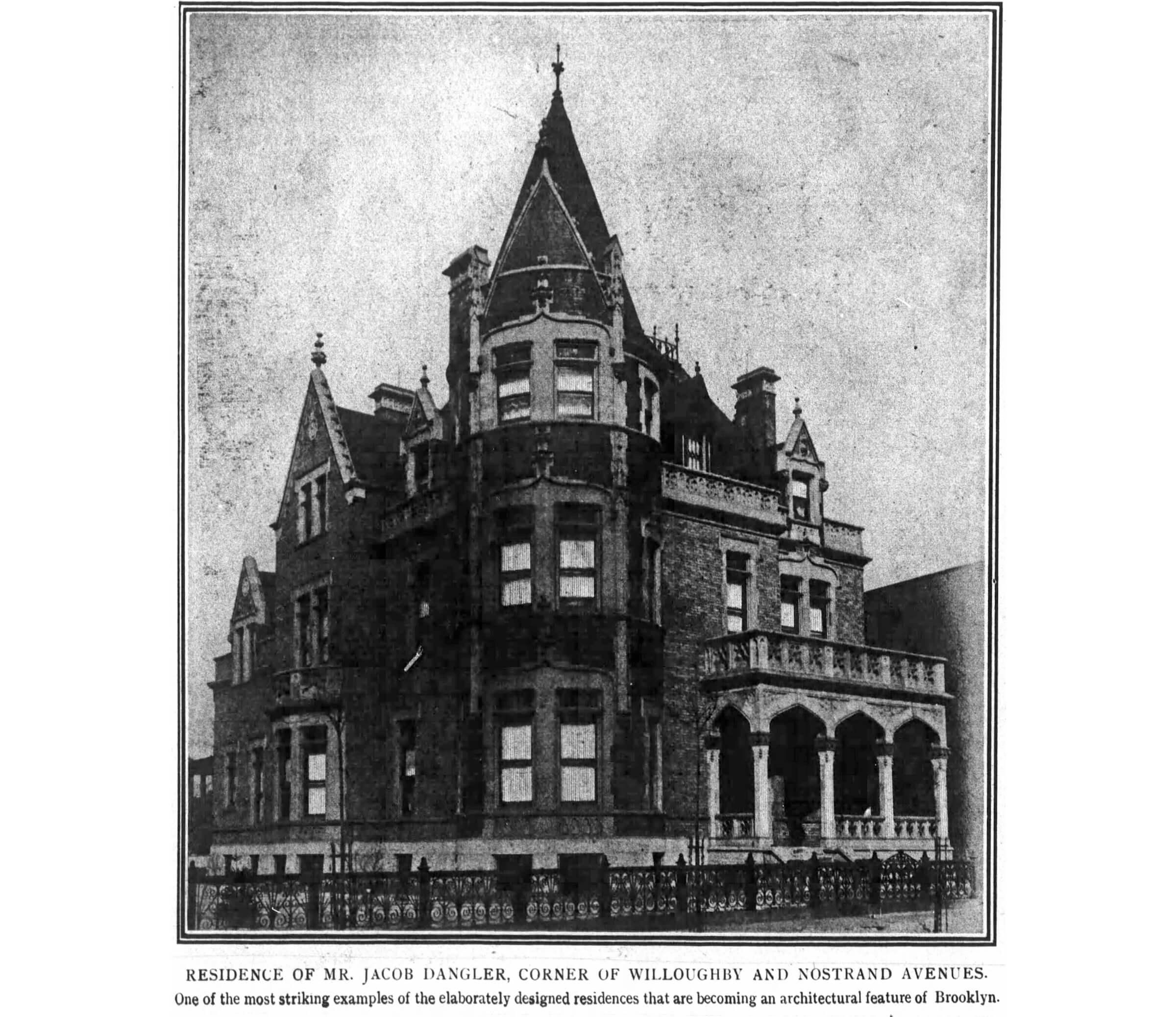
The United Grand Chapter said it hopes to sell the site to developer Tomer Elrich, who plans to demolish the mansion to make way for a seven-story, 44-unit apartment building. The United Grand Chapter said it chose Erlich as the developer because he said he would provide 13 affordable units (at an unknown rate), underground parking and a community facility of at least 1,000 square feet, which reps previously said other developers would not do.
However, locals questioned those promises at a meeting on Sunday when Erlich and reps for the owners shared their plans, and again at today’s hearing.
A cultural and historical community anchor
Willoughby Avenue resident Paula Lee Poy told the commissioners you cannot walk four blocks in any direction of 441 Willoughby Avenue without seeing rampant high-rise construction “and yet this neighborhood has lost longtime residents because the area is no longer affordable, and also due to predatory lending practices.”
“Construction to mitigate an affordability crisis in Brooklyn is clearly not the solution and yet we keep turning to it as a talking point,” Lee Poy said. “To burden a single historic building with solving housing affordability is not only unfair, it is unrealistic.”
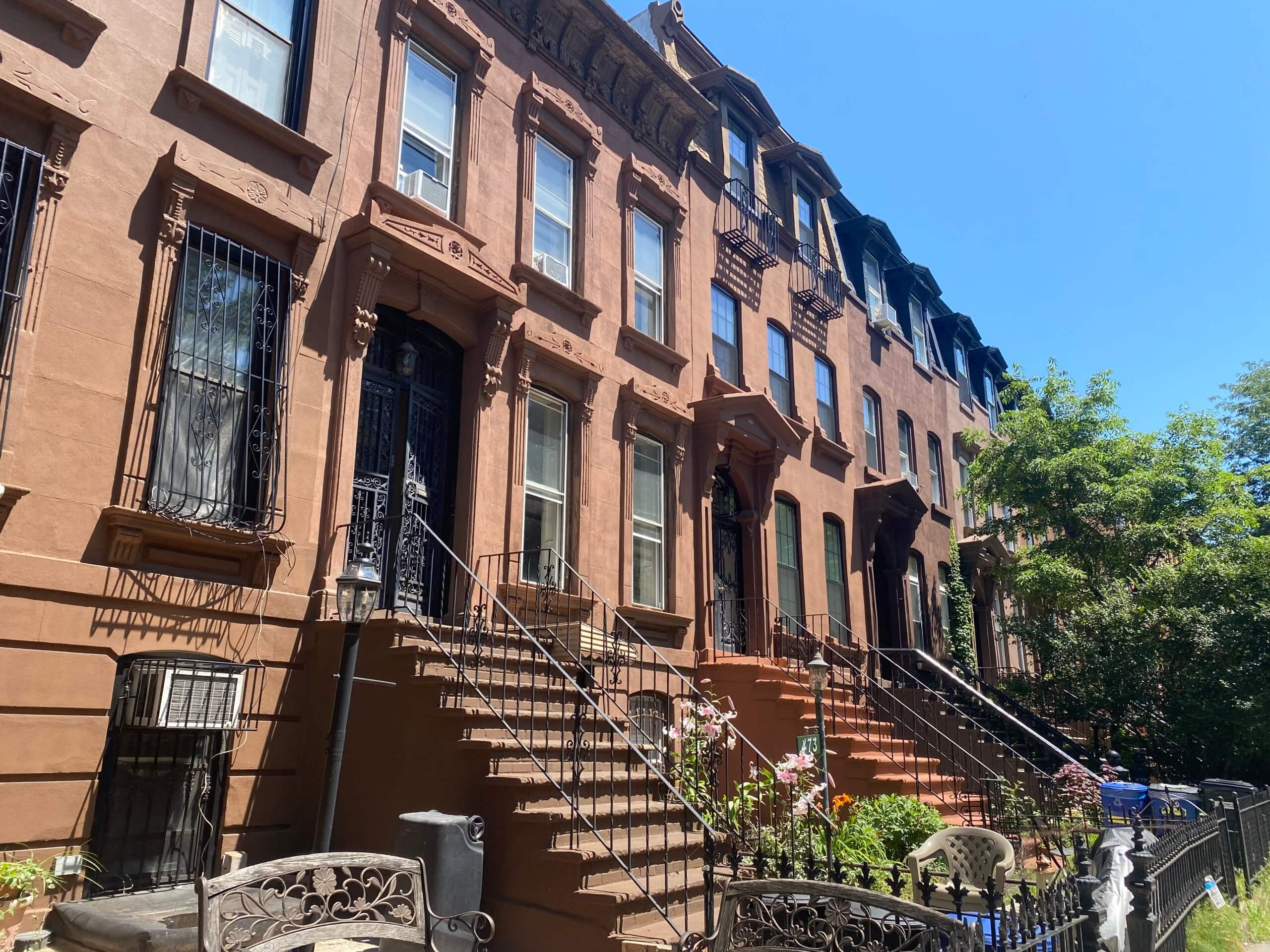
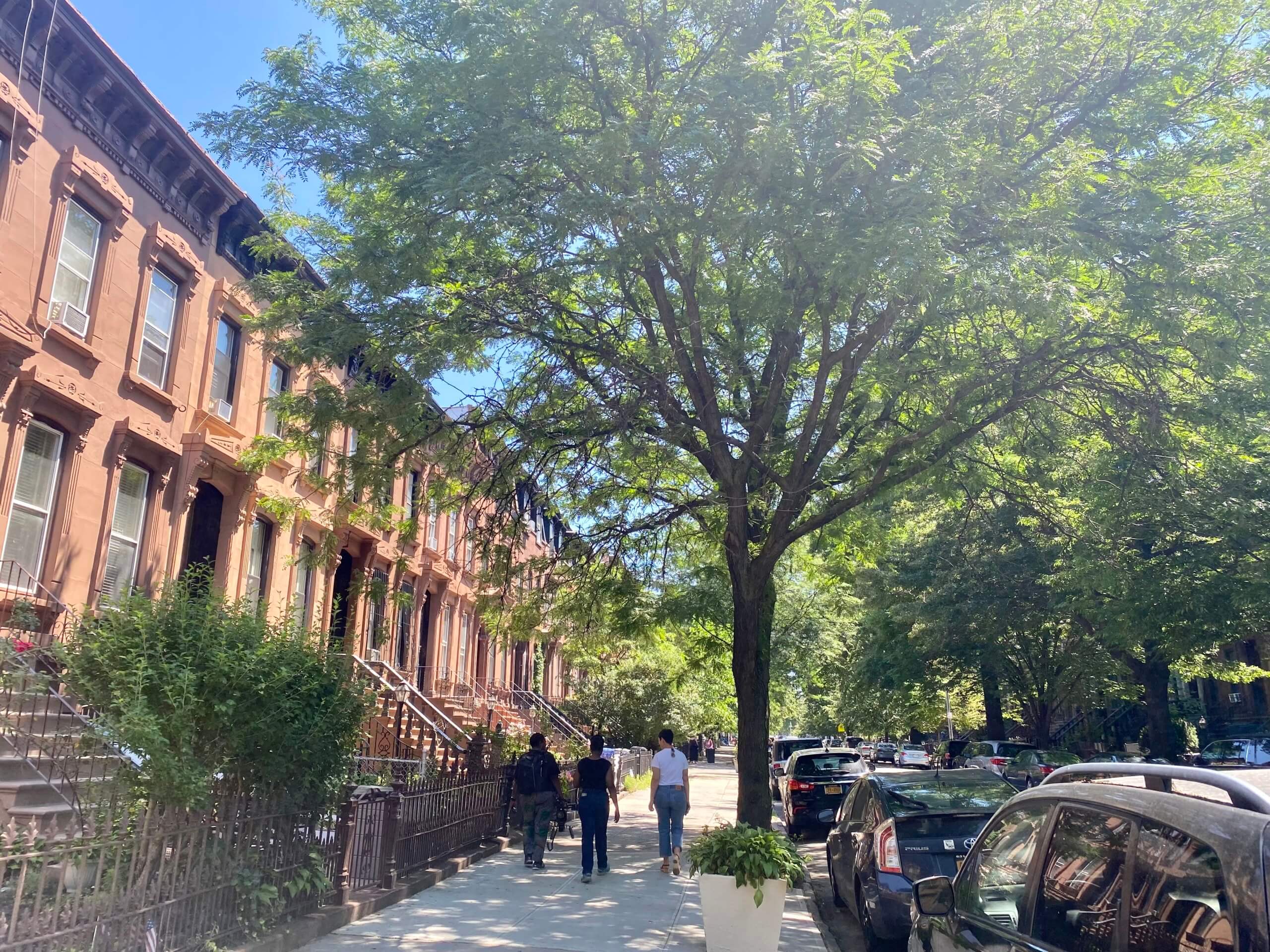
Lee Poy said five generations of her family had been able to call the block home, “purchased with the hope of something better, housing family and friends sharing rooms and kitchens in order to keep these homes, and they were purchased at a time when nobody wanted to live here.”
“So for many, we are not just carrying our hope, but the hope and fight of those who got us here 50 to 80 years ago,” she said. “Please recognize 441 Willoughby as not only a visual and architectural gem and landmark, but as an anchor that also preserves the history and relationships of a community.”
Pastor Kenneth Lewis, president of the Willoughby Nostrand Marcy Block Association, shared how prior to using the mansion for block association meetings and other community gatherings, he had held services there as a pastor where youth called it the castle.
“One day when I said, ‘What is the castle?’ my son brought me outside and said, ‘Dad, take a look at the building!’ When I looked at the building I understood why all the kids were calling it the castle, and they were excited to go to this castle. For many years this pillar, this entity, this building has been such a great avenue for our community.”
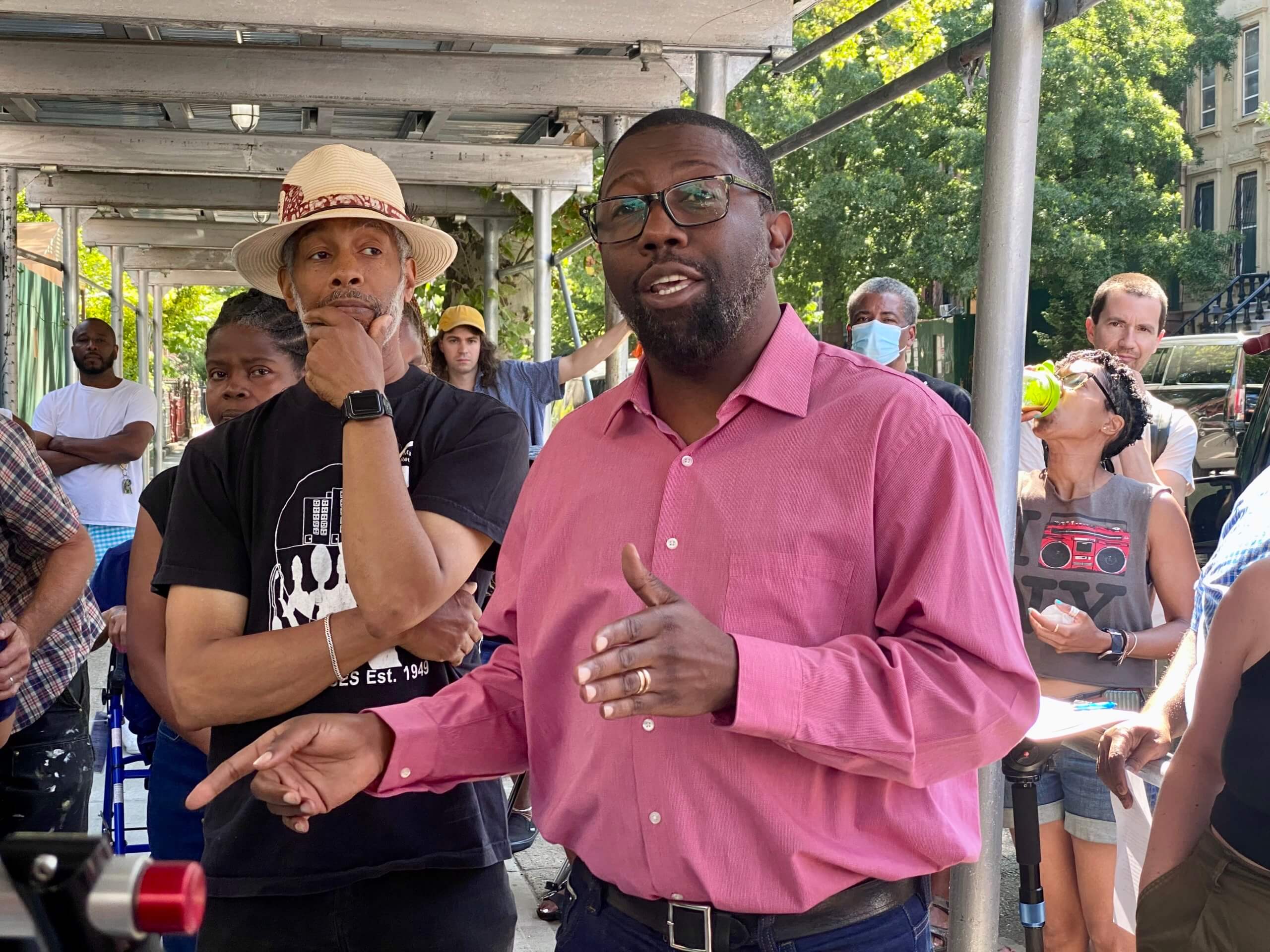
Lewis shared a quote from local preservationist Morgan Munsey, who told Patch in 2011: “Bedford Stuyvesant I call the antiques roadshow, but only with houses. It’s like having a Van Gogh in your attic and not knowing about it.” To which Lewis said at the hearing: “The Jacob Dangler house is our Van Gogh made with the French Gothic limestone, it beautifies our corner, we respect it and we want to preserve it for generations to come.”
Landmarking would lead to ‘financial ruin’
According to the Order of the Eastern Star members Punnett and Jefferson, landmarking the building, which has hosted weekly food pantries, community meetings, weddings, funerals, birthdays, dance classes and much more, would spell financial ruin for their organization.
Punnett said that if there is a way to save the building and have housing built around it, that would be the preferred route, but that is up to the buyer. “We hate to lose the historic value of the building, however the building as is if it becomes a landmark it will not be sellable, it will not be able to be improved upon, and thus it will be the biggest eyesore on Nostrand and Willoughby.”
Jefferson added that landmarking the building would be “an absolute disaster” for the organization, as she said there is a strong possibility the sale will fall through if landmarking goes ahead. “If you make it impossible to develop the property our buyer will be put in an untenable position: If he completes the sale he would have spent millions of dollars to buy a property he won’t be able to develop. If he decides to abandon the sale, we will be forced into litigation to try to recover the purchase price with no guarantee of success. In such an event you would have destroyed our sale and we will lose our building, that will truly be a taking without just compensation.”
Eliad Shapiro, the attorney for Erlich, said at the hearing the LPC had violated its precedent by not making Erlich aware of its intentions to investigate landmarking the house earlier, and by not giving him enough time to research his options ahead of the hearing. Shapiro requested the hearing be adjourned to give Erlich time to consult architects about what could be done if the property is landmarked. Mark Brandoff, the attorney for the United Grand Chapter, added that if the sale does not go through, the organization will likely end up in bankruptcy court where the fate of the building will be unknown. Any sale must be approved by the state attorney general, as is the rule for nonprofit and religious property.
Building could be saved by right owner
However, a number of speakers who testified in support of preserving the Dangler mansion challenged the idea the property would be undesirable as a landmark. Brownstoner columnist and preservationist Suzanne Spellen said at the hearing there are countless examples of similar houses being repurposed and/or adapted within preservation standards, which can include an addition or an adjoining building. “It just takes some imagination with developers and architects who value historic structures,” she said.
Lauren Cawdrey, a Willoughby Avenue local and key organizer in the landmarking campaign, urged the developer to consider a figure to abandon the project and move on, echoing Assembly Member Zinerman’s request at the Sunday meeting. The sale of the project was never made public, she added, and there could be nonprofits or community organizations in the wings who want to take over the space.
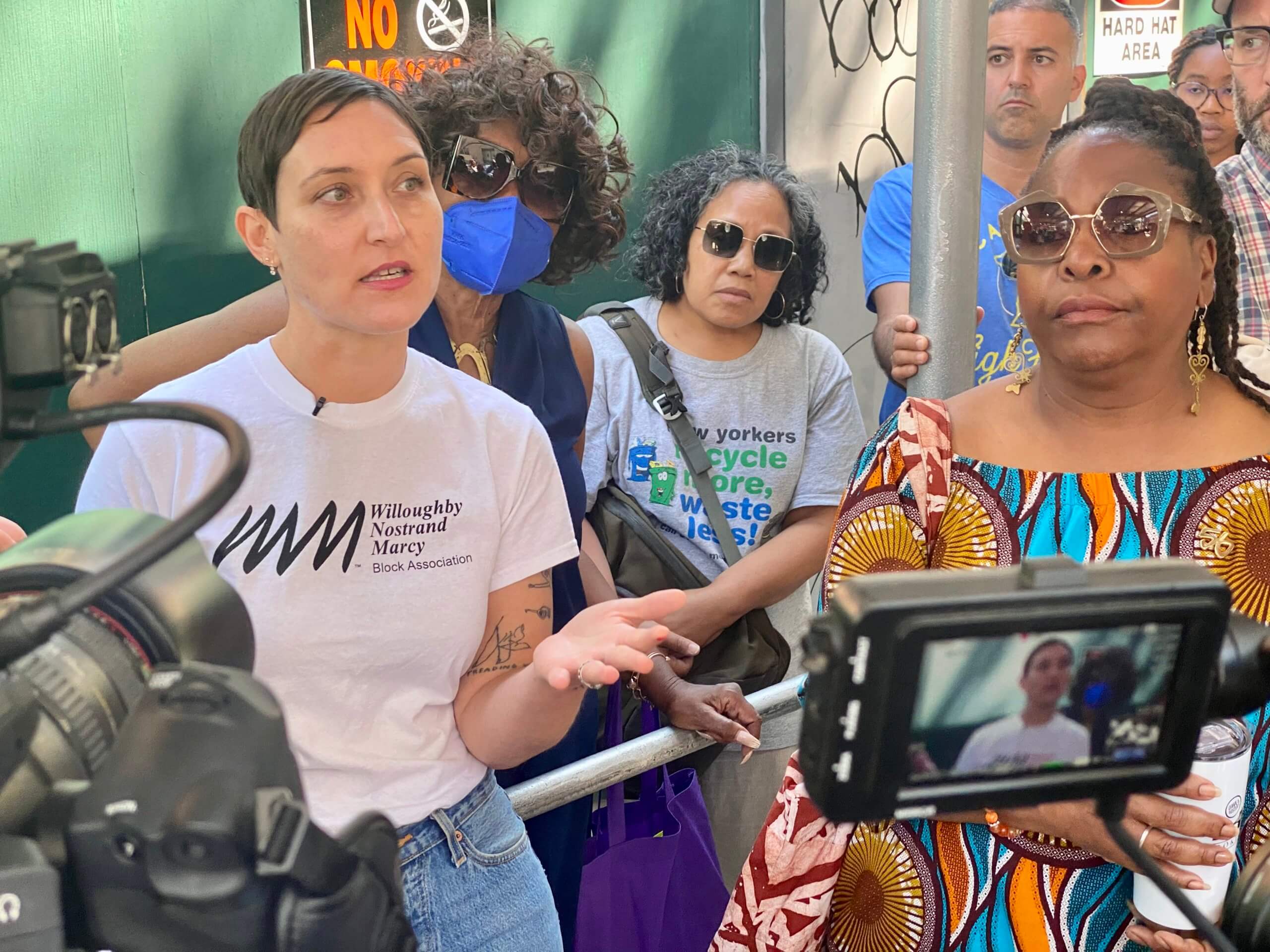
“Should that be an option, we hope to work with anyone who realizes the true value of this property beyond the land it sits upon. There is so much potential here once the right people get involved. There are many organizations who are preserving and restoring buildings all over the city and giving back in the process,” she said. “Let us remember, there is a potential for revenue here: It’s a rentable venue that was booked every weekend and for months in advance.”
More testimony came from AllinOne art collective member Audrey Banks, who is currently working with developer Joseph Banda on adaptive reuse projects in historic and landmarked properties in Brooklyn. Banks said she believes 441 Willoughby Avenue would be viable for an adaptive reuse project like the ones she is part of, and she supports the landmarking effort to help secure the building’s future and discover alternate uses for it.
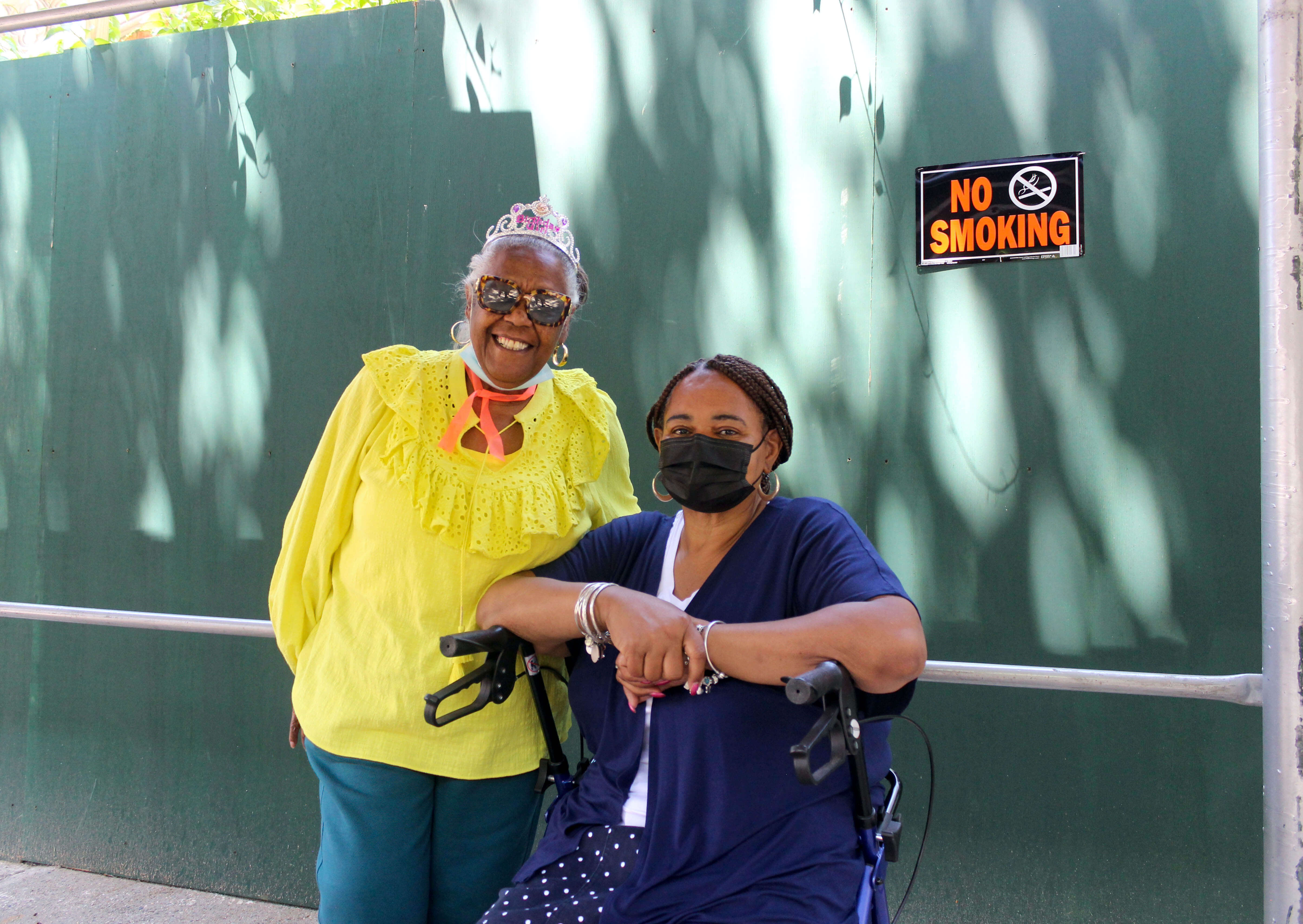
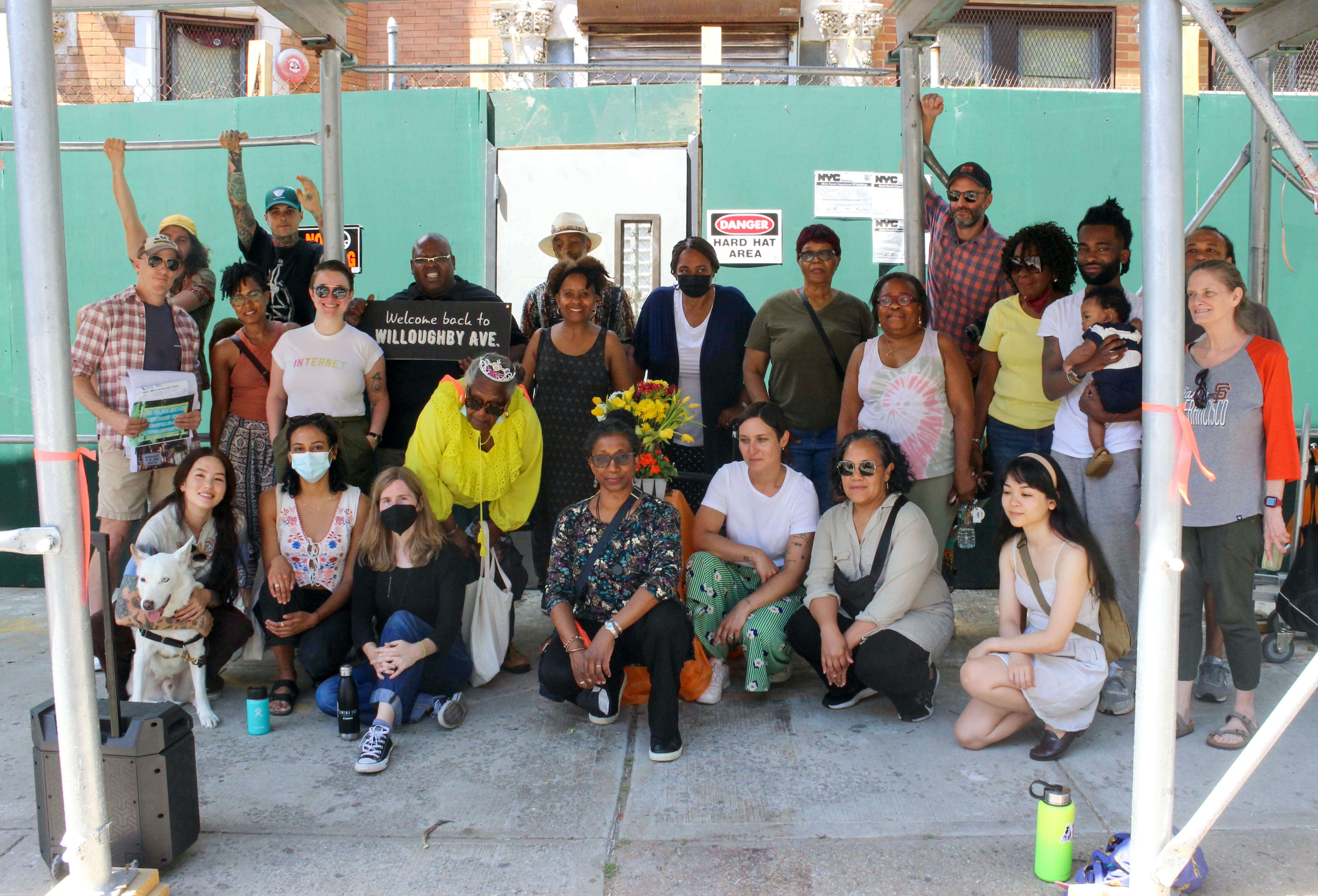
The final testimony came from Sekiya Dorsett, a local filmmaker who documents Bed Stuy. Dorsett told the commissioners how the unique culture of community had attracted her to the neighborhood more than 15 years ago, and that community is not just about the people, “it is about history, and 441 Willoughby is that history.”
“I have watched over the past year as the neighbors at 441 Willoughby have fought not just for a building, but for their lives. They are fighting to keep a culture where you know your neighbor, one a large building does not bring. They are fighting for peace of mind, one that has been thwarted by years of development, years of demolition,” she said.
Dorsett said it broke her heart to say it, but the situation is an example of “my people are being taken advantage of because of desperation, because they do not have enough resources, because they do not have the money to hold onto this building.”
She encouraged the LPC to “save history, and to be on the right side of it.”
LPC Chair Sarah Carroll closed the hearing saying the commission would go away and absorb the testimonies before coming back for a vote in the near future. The next LPC meeting is on June 19.
[Photos by Anna Bradley-Smith unless noted otherwise]
Related Stories
- How Much Would It Take to Walk Away? Locals Ask Developer, Owner of Bed Stuy’s Dangler Mansion
- In Surprise Move, Landmarks Saves Beloved Bed Stuy Mansion From Imminent Demise (Updated)
- Council Member Ossé to Landmarks: Landmarking 441 Willoughby Avenue Is the Best Decision for All
Email tips@brownstoner.com with further comments, questions or tips. Follow Brownstoner on Twitter and Instagram, and like us on Facebook.





What's Your Take? Leave a Comment